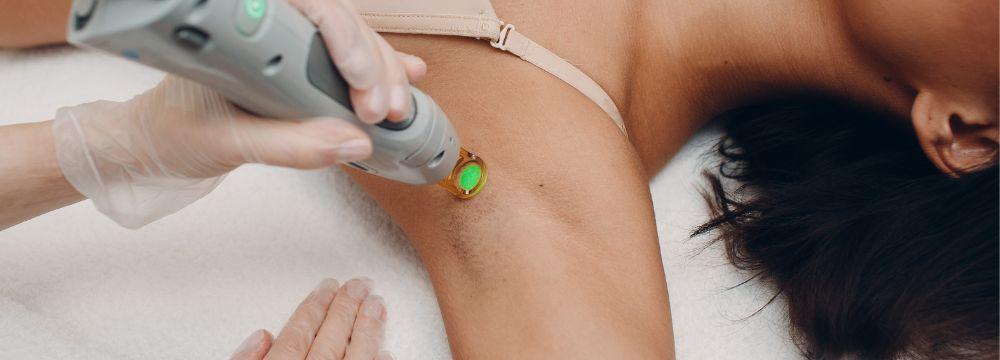RF Microneedling vs. Fraxel Laser – How to Choose?
Deciding which treatment approach will work best for your skincare needs can be challenging. Sometimes, reading reviews is helpful. Looking at before-and-after photos and understanding the technology can help decide which treatment to choose, but it can still be hard! You might even get different advice from trusted providers on which strategy will work best. Many therapies have similar indications, and there might not be just one right answer! Let’s dive deep into two skincare interventions that can each be used effectively for anti-aging, scars, loose skin, and hyperpigmentation. Seeing how each treatment works may help you determine the best next move for your skincare needs!
Just the Basics
RF Microneedling has been used successfully for many years, with newer devices making it more effective than ever before. The basic technology of RF Microneedling combines two distinct technologies into one device that can improve the skin’s texture, tone, firmness, and elasticity. This happens by way of tiny punctures with miniature needles (to a particular depth determined by your dermatologist) combined with radio-frequency stimulation delivered to the surrounding tissue. The procedure causes a controlled injury to the skin, so collagen and elastin production increases, leading to a rejuvenated look as it heals. Radiofrequency is delivered through the needles, providing thermal energy that heats the tissue and promotes tightening. This combined technology can have more significant effects than either one used alone.
Fraxel is a brand of laser with very similar indications, including increased collagen and elastin production and tightening effects. Although the outcomes might be similar, the mechanisms of how the devices work are entirely different. Fraxel uses two non-ablative lasers at different wavelengths to deliver energy into the skin instead of relying on needles.
How Do the Benefits Compare?
These two treatments have a lot in common; both depend on creating microscopic injuries to the skin to promote healing. The healing process is critical to achieving lasting results, including smoothing uneven texture. Both treatments also deliver heat to the tissue to make it contract and tighten, although the heat is generated by different sources.
RF Microneedling and Fraxel can be used to treat scars – either old, healed scars from acne or newer, fresh scars from surgery or injury. Older scars can be improved by creating a grid that allows their surface to remodel, meaning the surface imperfection appears less noticeable when it re-heals. Newer scars benefit from this approach because the microscopic injuries promote collagen production that can reduce the risk of the scar becoming noticeable in the first place.
Both RF Microneedling and Fraxel also benefit hyperpigmentation and wrinkles. RF Microneedling can apply subdermal heating up to 7-8 mm, while the needles vary in penetration depth depending on the patient and body part. Newer, heavily marketed RF Microneedling devices like Morpheus 8 have 24 pins in a grid pattern. Fraxel can penetrate up to around 1.7mm in depth, although it uses two distinct wavelengths to address the upper and lower layers of the skin. Fraxel also operates in a grid shape, with microscopic columns of skin treated as the laser moves over the area.
What Are the Main Differences?
Aside from the mechanism of action, the indications are the most significant difference between the two therapies. The two devices have similar indications for facial skin, including acne scars, dyschromia, and wrinkles. However, some microneedling devices are also approved for treating subdermal adipose tissue, aka fat. This deeper fat tissue cannot be reached by Fraxel. On the other hand, Fraxel is approved to treat lentigo and actinic keratosis lesions, which might not be easy to treat with RF Microneedling.
RF Microneedling might also be slightly less expensive than Fraxel, depending on your provider.
Both technologies have similar downtime and post-treatment aftercare instructions. They have similar risks, including sun sensitivity and post-inflammatory hyperpigmentation. RF microneedling tends to be more uncomfortable than a non-ablative laser.
The Bottom Line
These two treatments are tried and true methods to rejuvenate the skin and improve facial scars, laxity, and wrinkles. The best treatment for you depends on your goals, and we encourage you to schedule a consultation with one of our dermatologists to understand more.




